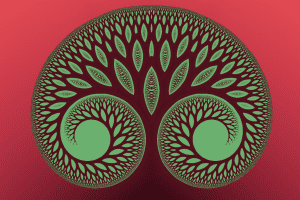According to a story from macleans.ca, Julia Alton felt hopeless when she first started to experience the symptoms of her Fabry disease. However, she refused to let the disease hold her back. As the Executive Director of the Canadian Fabry Association, she has helped pioneer initiatives to help spread awareness about Fabry disease.
Fabry disease is a genetically inherited lysosomal storage disease. A deficiency of the alpha galactosidase A enzyme, caused by a genetic mutation, allows for an unusual buildup of glycolipids in the body of an affected person. The disease cause a range of unusual symptoms, including pain in the hands and feet, digestive system problems, an inability to sweat, loss of kidney function, heart complications, and papules on the skin. The risk of stroke is increased. Many people with the disease die due to heart problems, and a kidney transplant may be necessary for some patients. To learn more about Fabry disease, click here. Many people with rare diseases go on living undiagnosed, and many people who are living with an undiagnosed case of Fabry disease have probably never heard of it.
Unfortunately, many doctors may not have heard of the disorder either, which highlights the lack of awareness about Fabry disease. Julia Alton is a Fabry disease patient herself. Recently, she met a seventy year old man that had only just been diagnosed with the disease. This was after suffering from terrible complications such as a stroke and heart attack without understanding the underlying cause. One of the problems is that Fabry disease is very good at mimicking more common diseases. For example, the digestive problems that are associated with it can often resemble irritable bowel syndrome.
Enzyme replacement therapy is an effective treatment that can prevent symptoms from worsening, and the Canadian Institutes of Health offers a gene therapy treatment for Fabry. The disease killed Julia’s dad when she was only eighteen; his case had gone undiagnosed and untreated, and by the time he was able to be treated it was too late to save his life. Even before this, Julia began to recognize her first symptoms: pain in the hands and feet.








